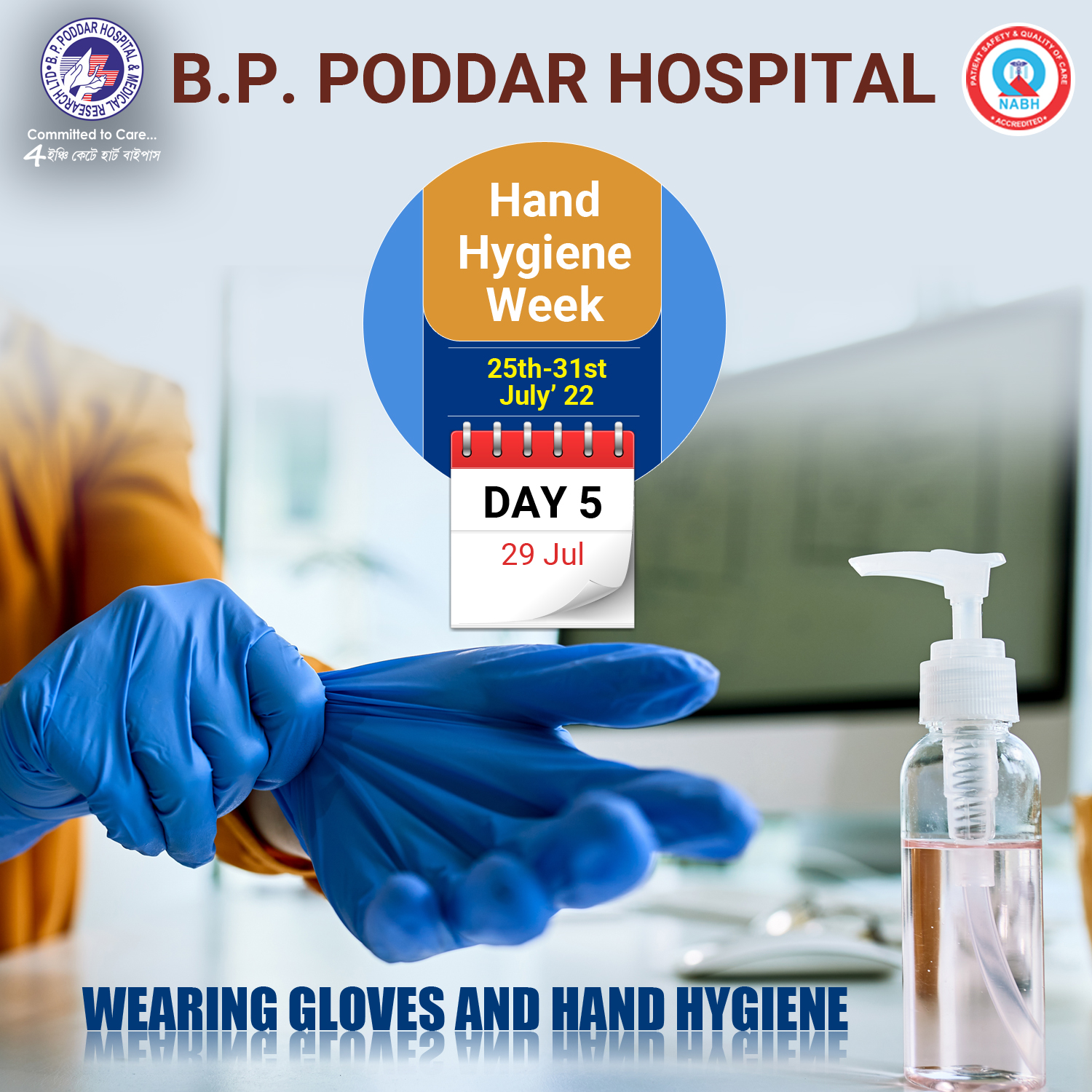
Another trivial thing for maintaining Hand Hygiene is the use of gloves. It is a Personal Protection Equipment (PPE) employed in common precautions against the spread of pathogens from healthcare providers' hands to those of their patients as well as from patients' hands to those of their colleagues. Many people are unaware that the gloves' level of protection is insufficient. In one study, it was discovered that when doing basic patient care, workers who did not wear gloves and that had contaminated their hands at a rate of 16 bacterium per minute, compared to 3 bacteria per minute for those using gloves. Therefore, using gloves DOES NOT eliminate the necessity to wash our hands afterwards. Whether wearing gloves make it harder to maintain good hand hygiene has been the subject of various research. The majority of research have been modest and have evaluated the use of gloves and hand cleanliness using non-standardized methods. Since it's quite challenging to remove the gloves without contaminating our hands, doctors must also sanitize their hands after using them. Otherwise, it can cause the transfer of germs from the gloves onto the skin. A recent study has found that skin or garment contamination occurred in 52.9% of glove removals. Every time we touch anything, we should take off our gloves, wash your hands and then put on the fresh ones. If the same gloves are repeatedly used, then there are higher chances of contaminating everything we touch. Thus, it’s very important to put on the fresh gloves at regular intervals and wash our hands properly and sanitize our belongings. Gloves should be used whenever a patient is being cared for when exposure to blood or any other body fluid is possible (including contact with mucous membranes or skin that isn't intact), as well as during contact precautions and outbreak circumstances.
The recommended guidelines regarding usage of gloves as issued by the World Health Organization (WHO) are listed below -
Long-term use of gloves for contact precautions without taking into account the necessity for hand hygiene might lead to the spread of germs.
